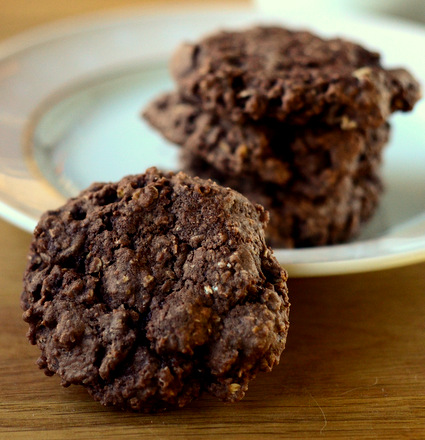 While all purpose flour continues to be the most widely used flour when it comes to baking, it certainly isn’t the only option that you have when you want to bake up some delicious dishes. Over the past several years, the popularity of non-wheat flours has skyrocketed. It is now easier than ever to find these “alternative” flours in the baking sections of regular markets, where you once had to track them down at specialty stores if you wanted to give them a try. These flours offer the opportunity to infuse your baked goods with new flavors and textures, opening up a whole world of new baked goods for you to try. In Flavor Flours: A New Way to Bake with Teff, Buckwheat, Sorghum, Other Whole & Ancient Grains, Nuts & Non-Wheat Flours, Alice Medrich offers up dozens of recipes that make these non-wheat flours the star and show you just how much you can do with them.
While all purpose flour continues to be the most widely used flour when it comes to baking, it certainly isn’t the only option that you have when you want to bake up some delicious dishes. Over the past several years, the popularity of non-wheat flours has skyrocketed. It is now easier than ever to find these “alternative” flours in the baking sections of regular markets, where you once had to track them down at specialty stores if you wanted to give them a try. These flours offer the opportunity to infuse your baked goods with new flavors and textures, opening up a whole world of new baked goods for you to try. In Flavor Flours: A New Way to Bake with Teff, Buckwheat, Sorghum, Other Whole & Ancient Grains, Nuts & Non-Wheat Flours, Alice Medrich offers up dozens of recipes that make these non-wheat flours the star and show you just how much you can do with them.
The first thing that you’ll notice about the book is the beautiful table of contents, which simply shows each flour used in the book in its natural state. The book is divided up into chapters by flour: Rice, Oat, Chestnut, Teff, Cornflour and Cornmeal, Buckwheat, Sorghum, and Nut and Coconut Flours. This system makes it fairly easy to identify the types of recipes you can make based on what flours you currently have in your pantry. Each chapter opens with a description of the flour, describing where it comes from, what it tastes like and how it can be used. Before getting into the recipes, which range from simple sponge cakes to more decadent desserts, Medrich also talks about the flavor affinities for each flour and describes both where to buy them and how to store them. The recipes are very clearly written and easy to follow, suitable both for bakers just beginning to experiment with these flours and bakers who have more experience with them. Both professionals and home bakers will get a lot out of this book.
This book treats these non-wheat flours in a different way than most books because it sets out to showcase their unique flavors, giving you reasons (besides the simple fact of being non-wheat based) to use them in your baked goods. Many cookbooks simply try to disguse these types of flours under other flavors while trying to create gluten free recipes that mimic the look, feel and flavor of wheat-based recipes. This approach is one of the things that makes this book so appealing – in addition to the well-written recipes – because it really teaches you, as a baker, how to use the flours and shows you what they can do. As a result, you’ll probably be a lot more interested in experimenting with them on your own after you finish reading through the book!






What do you think?